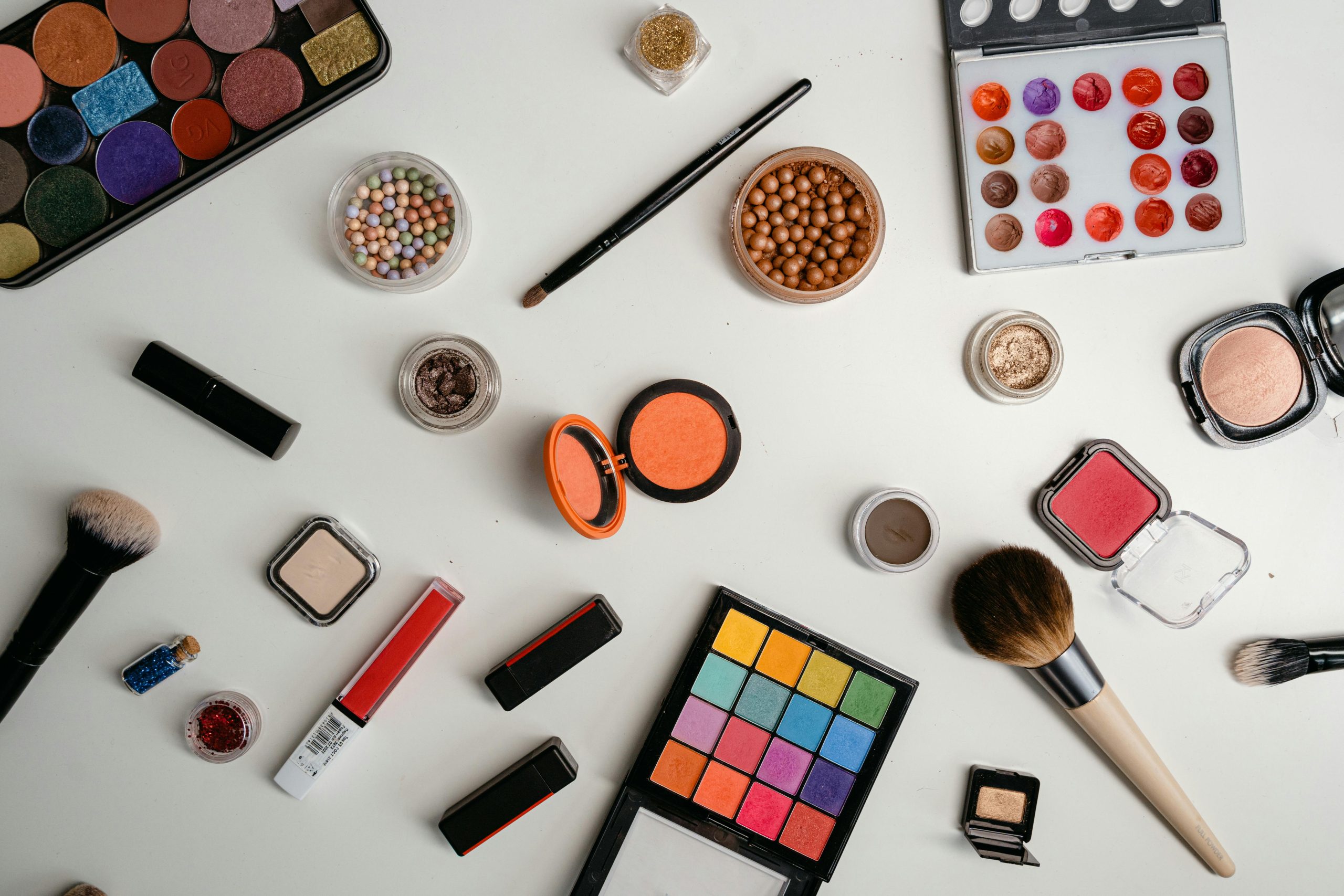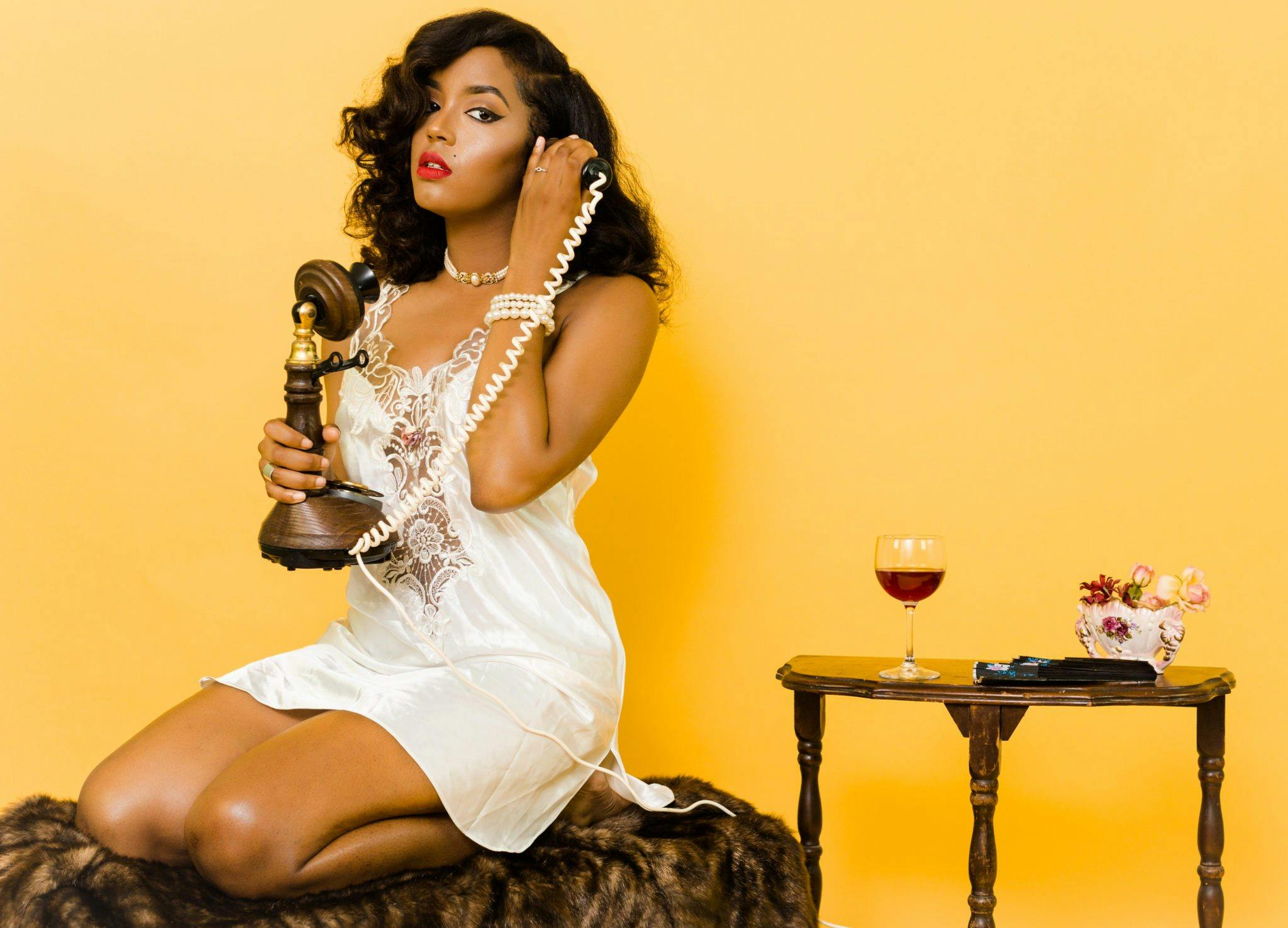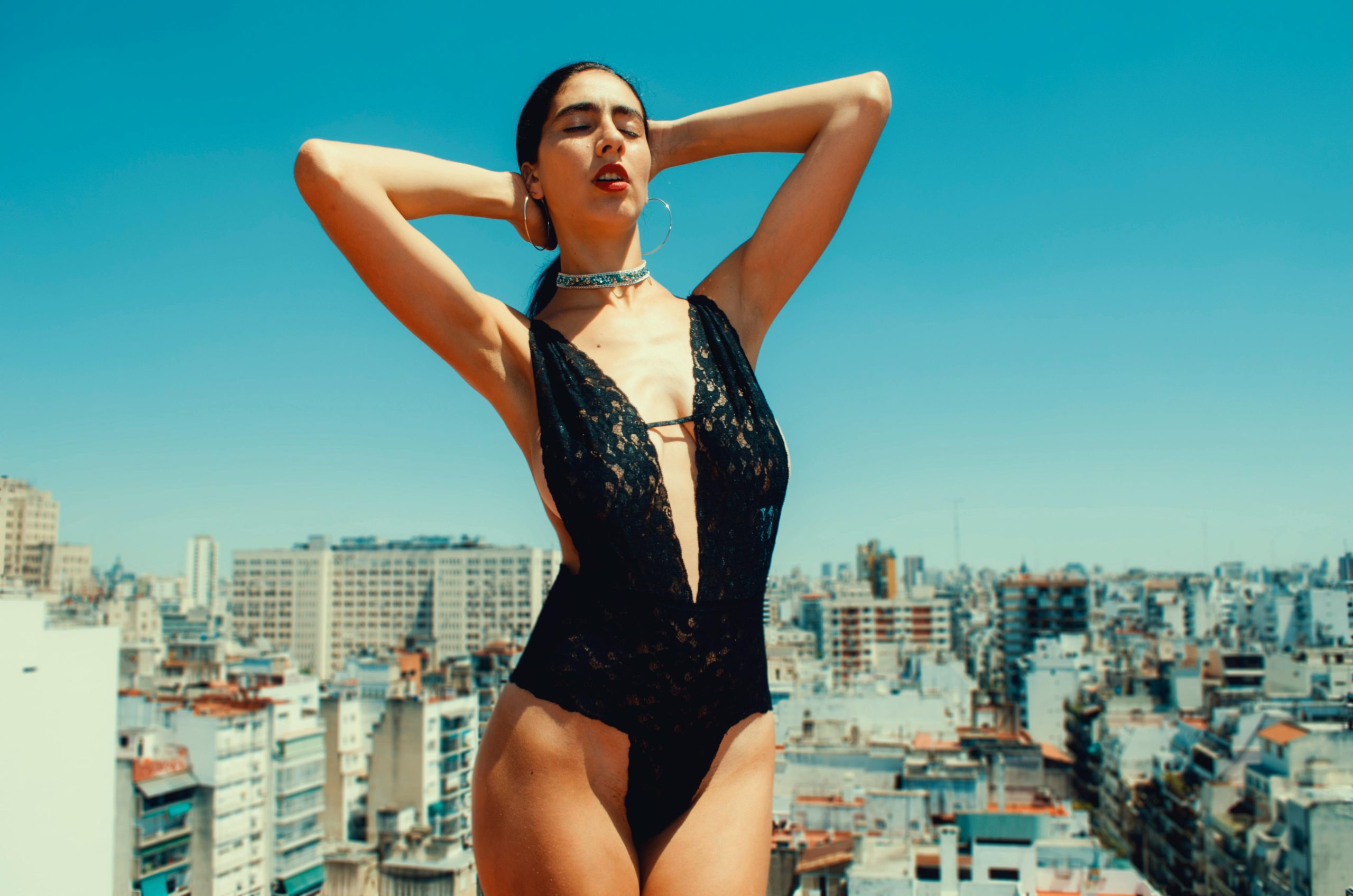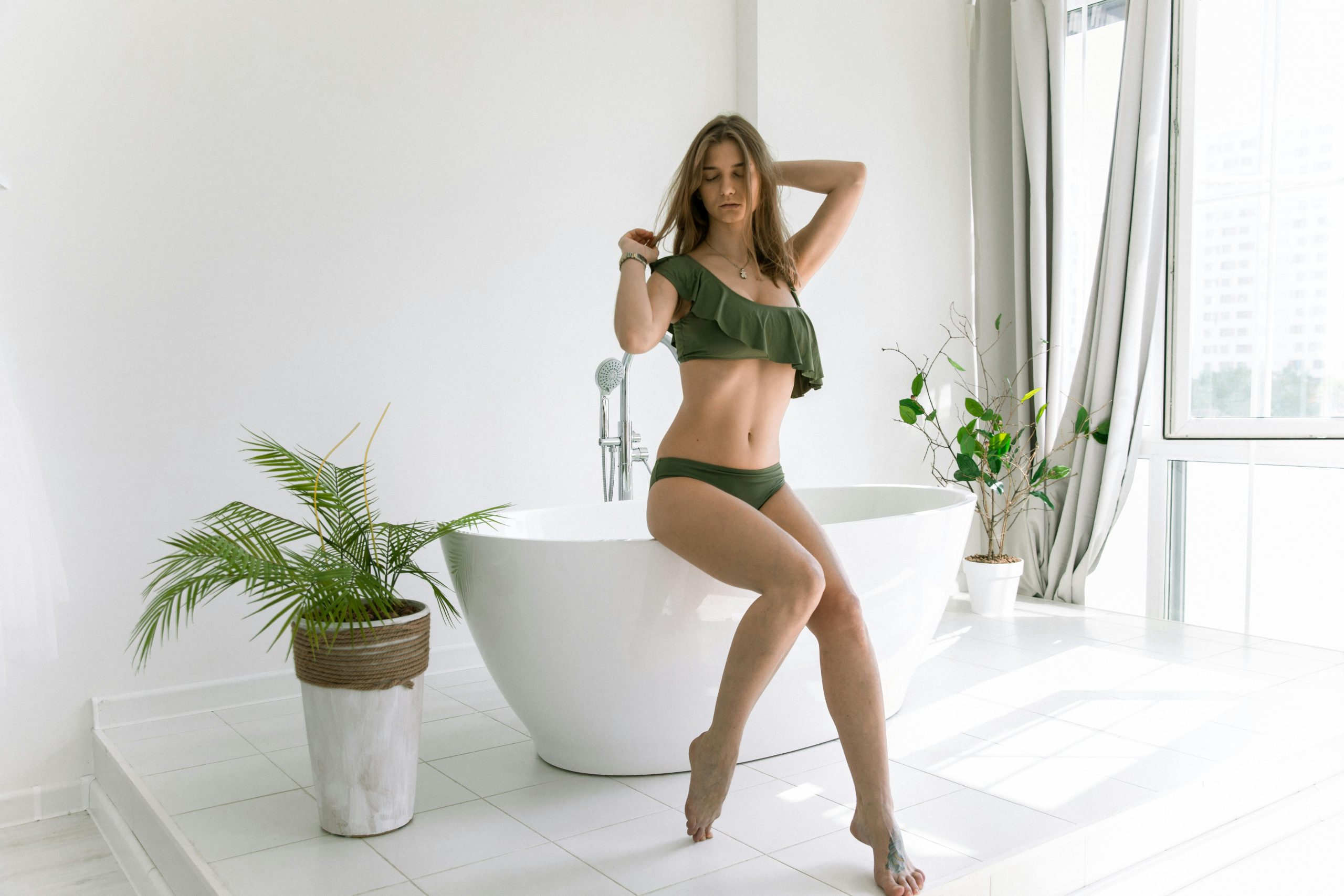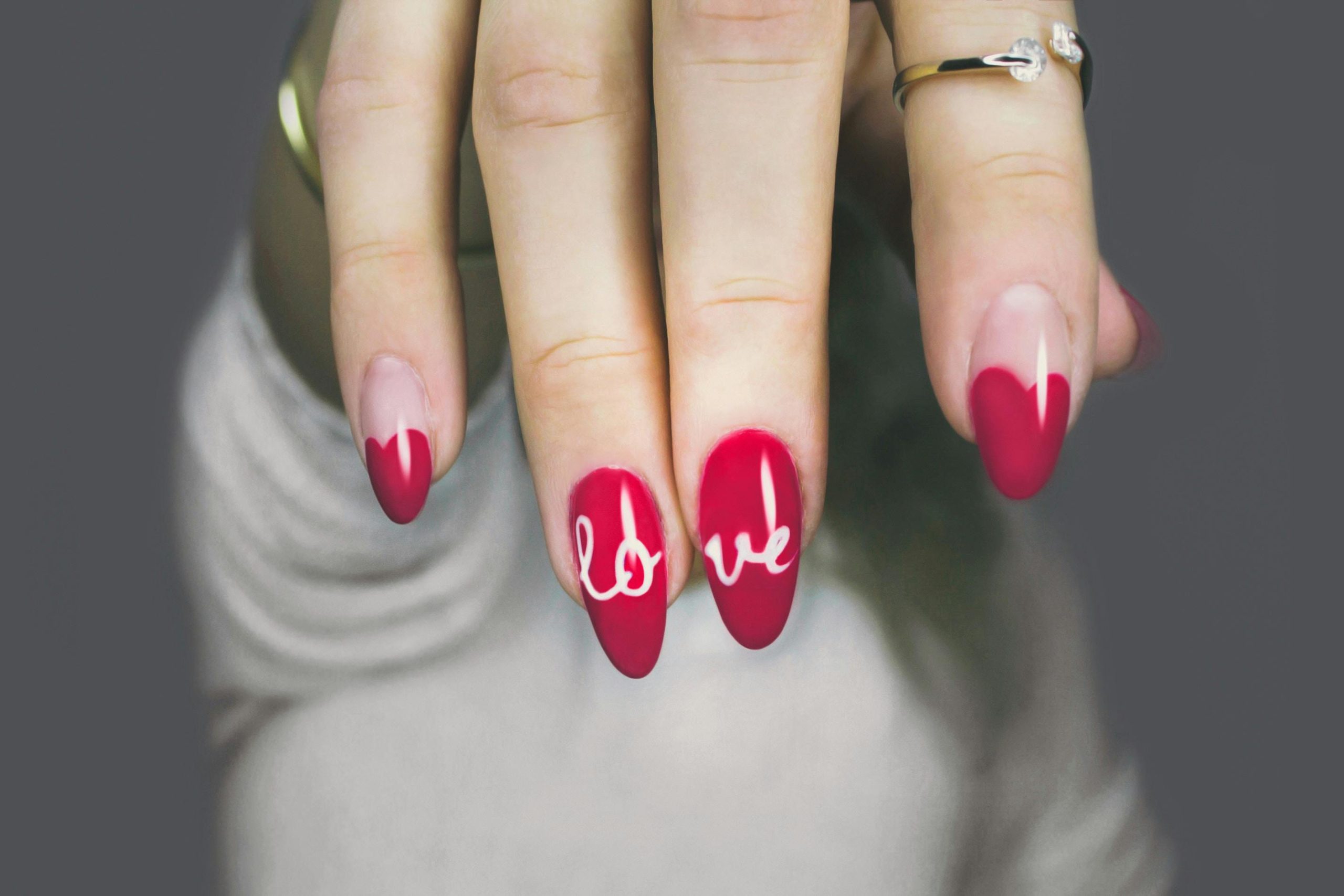How to look good on Zoom: The ultimate guide to wowing on video calls
It’s safe to say that Zoom calls are here to stay, with the platform hosting 300 million meetings every single day! Andwhether for work, virtual happy hours, or even a digital date, looking your best on video can boost your confidence and leave a memorable impression.
With more time spent online, it’s worth perfecting your look—from hair and makeup to wardrobe and room decor.
So, here’s a no-fuss guide on how to look good on Zoom, so you can focus on what really matters—like remembering to unmute yourself!
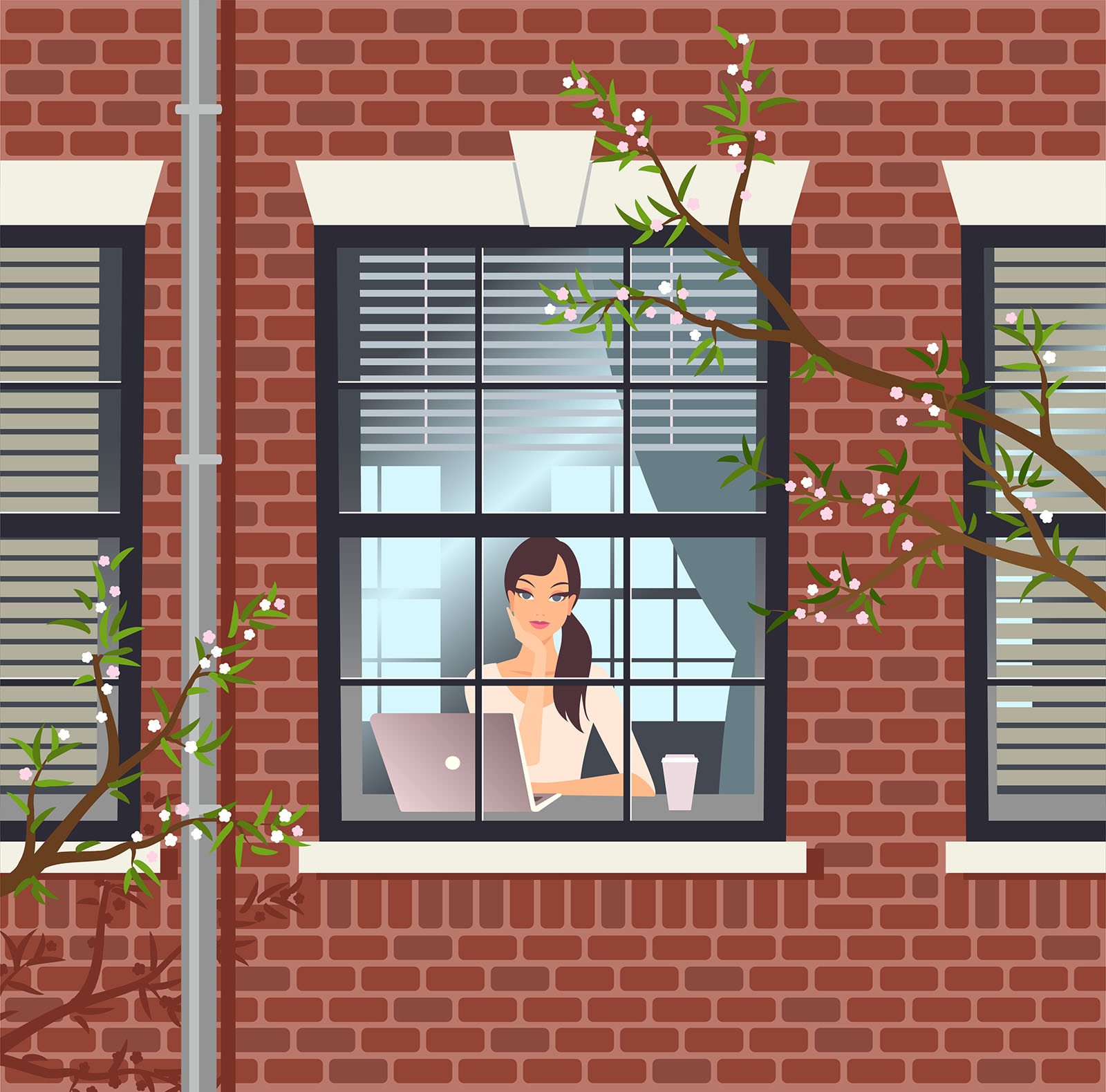
Makeup: Keep it simple but defined
Zoom makeup requires a few unique tweaks to account for the lighting and camera resolution quirks. Here are some insider tips to help your look stand out while keeping things simple and effortless.
1. Use a blurring primer to smooth skin texture
One lesser-known tip for looking great on camera is using a blurring primer. These contain light-diffusing properties that smooth out skin texture, filling in pores and fine lines for a “soft focus” effect that works particularly well on Zoom.
Our top choices to look good on Zoom? Rare Beauty Pore Diffusing Primer, Milk Makeup Pore Eclipse Mattifying + Blurring Makeup Primer, and Refy Blur and Hydrate Oil-Control Face Primer
2. Blush and bronzer: Add life back to your face
Zoom tends to wash out your natural color, so a natural flush adds warmth and life to your face. Choose a rosy or peach-toned blush and apply it to the apples of your cheeks, blending upward toward your temples.
If you want more definition, add a light sweep of bronzer under your cheekbones, along your jawline, and on the sides of your nose. This helps add depth and prevents your face from looking flat on camera. A small amount does the trick, so you look sun-kissed without looking overly contoured.
3. Layering cream and powder for a natural glow
Cameras tend to flatten out our features, so adding subtle layers can help create depth and make your skin look healthy and alive on screen. Start with a cream blush or bronzer, then lightly set it with a powder blush or bronzer in a matching shade.
This layering technique creates a dimensional effect, giving you a natural, lit-from-within glow that doesn’t look heavy or overdone. Plus, it helps your makeup last longer without requiring touch-ups.
4. Brighten it up!
Dark circles stand out on camera, so apply a small amount of brightening concealer under your eyes. Choose one that’s slightly lighter than your skin tone to lift the area and create a more “awake” look. Blend well with a brush or fingertip to ensure it looks seamless.
5. Brows: Frame and define
Brows frame your face, so take a moment to fill them in, especially if they’re sparse. Use a brow pencil or powder that matches your natural brow color to define and shape them lightly. A quick swipe of brow gel will help keep everything in place and create a natural look.
6. Mascara for defined lashes
Mascara is a simple way to make your eyes pop on camera. Choose a tubing mascara or one with a long-lasting, smudge-proof formula that stays put through long calls.
Curl your lashes and apply a few coats to the top lashes for that “awake” look. A subtle lift of the lashes makes your eyes appear larger and more open.
7. Emphasize the upper lash line to define your eyes
If you prefer a bit more definition, try a soft brown or gray eyeliner along your upper lash line. A pencil or soft liner works best for a subtle look. Smudge it out with your fingertip or a brush for a soft, blended effect that enhances your eyes without looking too harsh.
Or try “tight lining,” which fills in the gaps between your lashes, creating a subtle definition that opens up your eyes without the obvious look of eyeliner. It’s a great trick for a natural yet defined eye look.
How to do it? Use a dark brown or charcoal eyeshadow and a fine-tipped brush to gently press the color into your lash line rather than drawing a full eyeliner line.
8. Lips: Just a hint of color
A little color on the lips brings balance to your face and gives you a polished look without feeling overdone. Choose a tinted lip balm or a soft, sheer lipstick in a shade close to your lip color for a natural look. This subtle enhancement keeps your lips looking healthy and vibrant, without drawing too much attention.
If you want a bit more structure, outline your lips with a lip liner in a color that matches your lipstick or natural lip tone. Then, fill in with a balm or lipstick for a defined, plump look.
9. Highlight strategically for a subtle lift
A matte or satin highlighter (without glitter) can give you a subtle lift on camera. Place it on the inner corners of your eyes, the tops of your cheekbones, and just below the brow bone.
This soft highlighting effect gives structure to your face, making you look more alert and fresh without the extra shine that can sometimes look greasy on Zoom.
10. Multi-use products to balance the look
Instead of using multiple products, opt for a multi-use cream product in a natural pink or coral shade that you can apply to your cheeks, eyelids, and lips. This creates a harmonious color scheme that looks cohesive on camera and saves time in your routine.
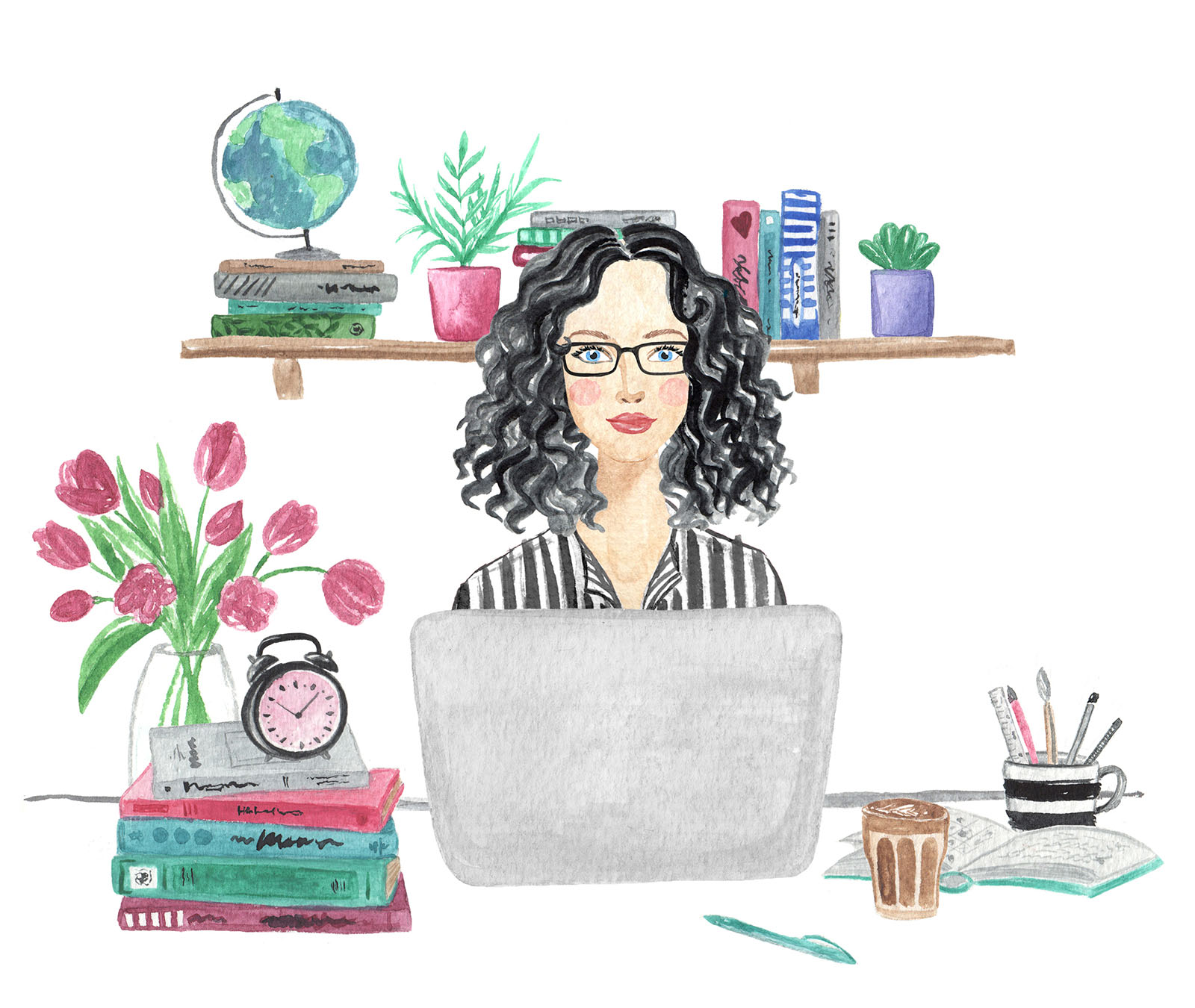
Hair: The 5-Minute Fix
When you’re short on time but still want to look good on Zoom, there are a few pro tips that go beyond the usual quick styles.
Here’s how to get the most out of your hair in five minutes, with tricks that keep it looking fresh and put-together—even when the camera isn’t so forgiving.
1. Add face-framing tendrils for instant softness
Pulling out a few face-framing strands from a ponytail or bun is one way to soften your look instantly. The key to making this look intentional (rather than messy) is to add a small amount of styling cream or hair oil to those front pieces and twist them lightly.
This creates a delicate wave that adds softness and frames your face on camera, giving you a more approachable, flattering look. If you have time, use a curling wand for just a couple of seconds to add a loose curl to these strands.
2. Side part for instant face framing
Consider switching to a side part for a Zoom call if you usually wear a center part. A deep side part not only adds volume but also frames your face in a flattering way that’s visible even on camera. Try clipping one side back for a clean, asymmetrical look that’s both chic and effortless.
3. Tuck one side behind the ear for a polished look
Sometimes, the simplest moves make the biggest difference for looking good on Zoom calls. Tuck one side of your hair behind your ear and secure it with a discreet bobby pin if needed. This asymmetric look frames your face, opens up your features, and adds a touch of sophistication.
4. Add shine to the ends for a polished finish
For a quick touch of polish, add a drop or two of hair oil or a shine serum just to the ends of your hair before a video call. This small trick makes your hair look healthy and intentional without weighing it down or making it look greasy.
Focus on the ends rather than the roots, as shiny ends can catch the light on camera and give your hair a sleek, professional finish.
5. Experiment with face-flattering accessories
A strategic hair accessory can work wonders if you want to change things up or don’t have time to style. Try a thin headband, a chic hair clip, or even a fabric scrunchie that matches your top.
Choose accessories in colors that complement your skin tone or outfit—muted metallics, soft blush tones, or classic black are usually safe bets. The right accessory can add style in seconds and keep your hair looking intentional.
6. Quick styles for volume and frame
When your hair needs an instant pick-me-up, certain styles work wonders to make you look good on Zoom:
The slightly messy top knot or bun: Gather your hair into a high bun or knot, leaving a few face-framing strands loose. This style lifts your hair off your face, which is great for showing off your features. Plus, the added height makes you look taller and more structured on camera.
Low ponytail with texture: If a bun isn’t your style, try a low ponytail. Leave out a few tendrils, and give the ponytail a gentle tease for added volume. For a sleek look, smooth down the sides with a small amount of styling gel.
Half-up, half-down: This style is perfect if you want to balance structure and natural flow. Just pull back the top half of your hair and secure it with a clip or hair tie. This keeps your hair out of your face and still lets your hair’s natural movement show.
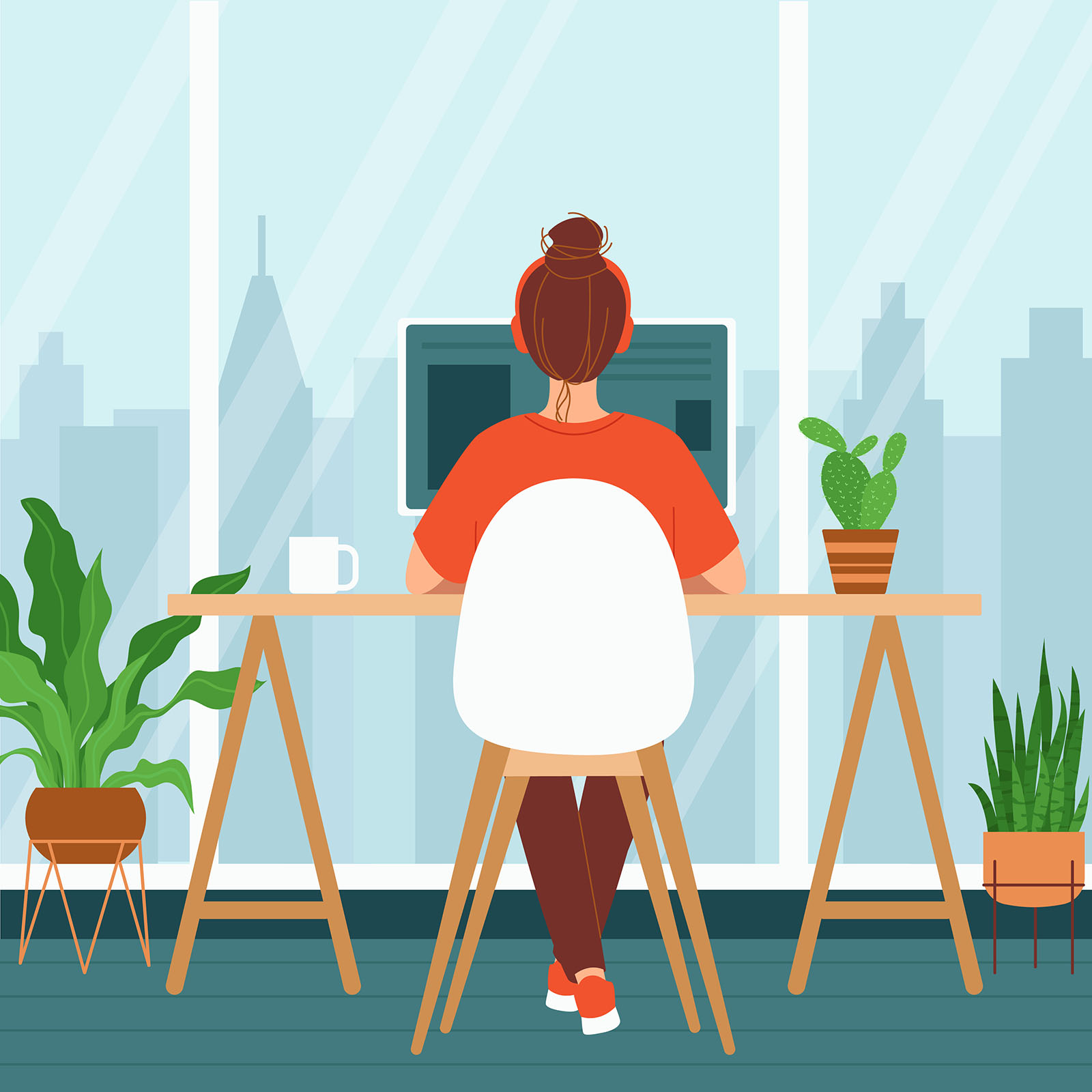
Clothes: Tops that Pop
When it comes to dressing for Zoom, your top is the show’s real star. Since your audience only sees you from the shoulders up, this is the perfect time to make the most of color, fabric, and style that draws attention to your face and complements your background.
1. Choose flattering colors that make you stand out
Color is the first thing people notice on camera, so pick shades that enhance your natural features and make you stand out.
Bright, solid colors: Vibrant colors like royal blue, emerald green, deep burgundy, or mustard yellow look good on Zoom. They add a pop of energy and ensure you’re the center of attention. Jewel tones, particularly, flatter most skin tones and are timelessly stylish.
Pastels for softness: If you’re going for a more approachable look, soft pastels like lavender, blush pink, and light blue can be gentle on the eyes while adding a hint of color. They’re great for casual or friendly meetings and pair well with natural lighting.
Avoid neutrals and whites: White tops sometimes appear too bright or washed out on camera, especially in strong lighting. Similarly, beige, tan, and pale gray may blend into the background or look too dull. Try richer hues like navy, charcoal, or chocolate brown if you prefer neutrals.
Say no to black: While black is often a go-to in person, on Zoom it can appear harsh and flatten your appearance on camera, absorbing too much light and obscuring details. Opt for softer, richer colors instead, which will help create an impact and prevent you from looking washed out on camera.
Contrast with your background: Your clothing should contrast with your background to create visual separation. If your background is dark, use lighter colors that make you stand out, and vice versa. This simple trick ensures you don’t accidentally blend in with your surroundings.
2. Opt for simple, clean patterns
Busy patterns and intricate designs can be visually distracting and don’t always translate well on video. Keep your patterns simple and clean for a stylish and Zoom-friendly look.
Minimalist prints: Subtle prints, like tiny polka dots, delicate stripes, or light florals, add interest without overwhelming your face. These patterns are best when they’re small enough to read as texture rather than a bold print.
Avoid busy or complex patterns: Loud patterns, large florals, or complex graphics can be distracting and may look pixelated on camera. They can take attention away from your face and make it harder for others to focus on what you’re saying.
Skip logos and text: Graphics or large logos can be distracting, especially if the text isn’t centered on camera. Keeping it simple and logo-free ensures your audience’s focus stays on you.
3. Necklines that frame and flatter
The neckline of your top plays a huge role in drawing attention to your face, so select styles that highlight your features and add structure.
V-necks: A V-neck neckline is universally flattering and creates a nice frame around your face. It also elongates your neck and adds a touch of sophistication for video calls.
Crew necks and scoop necks: Crew necks are perfect if you want a classic, polished look, while scoop necks soften your look and bring focus to your collarbone. Both necklines provide ample coverage and look professional, making them a safe choice for most Zoom occasions.
Button-down collared shirts: A collared shirt, especially in a crisp color or light fabric, is a classic go-to for a reason. It gives you a professional look with minimal effort. You can keep it fully buttoned for a formal appearance or leave one or two buttons undone for a more relaxed vibe.
4. Select fabrics that look great on camera
The fabric of your top can affect how it looks on video, so pick materials that drape well and keep you comfortable.
Matte fabrics: Shiny fabrics, like satin or sequins, can reflect light awkwardly and create unwanted glare on the camera. Matte fabrics, like cotton, wool, or jersey, absorb light well and give a more natural, clean look.
Soft, medium-weight fabrics: Lightweight cotton or linen can wrinkle easily, which doesn’t translate well on screen. Medium-weight fabrics, like a good-quality jersey or wool blend, drape nicely and don’t look bulky—all of which look good on Zoom!
5. Add a dash of personality with accessories
Accessories can make a major impact on how you look on camera, giving your outfit that extra touch without stealing the show.
Small, simple jewelry: Subtle jewelry, like stud earrings, a delicate necklace, or a slim bracelet, adds a hint of elegance without overpowering your look. However, avoid large, dangly earrings or chunky necklaces that might sway or draw attention away from your face.
Necklaces that compliment your neckline: A simple chain or pendant that complements your neckline can add a bit of sparkle and pull your look together. If you’re wearing a collared shirt, try a statement necklace tucked under the collar for a chic touch.
Scarves for a pop of color: A lightweight scarf can do wonders if you want to add personality or a pop of color. Choose a scarf in a color that complements your top, and keep it neatly draped to avoid bulk.
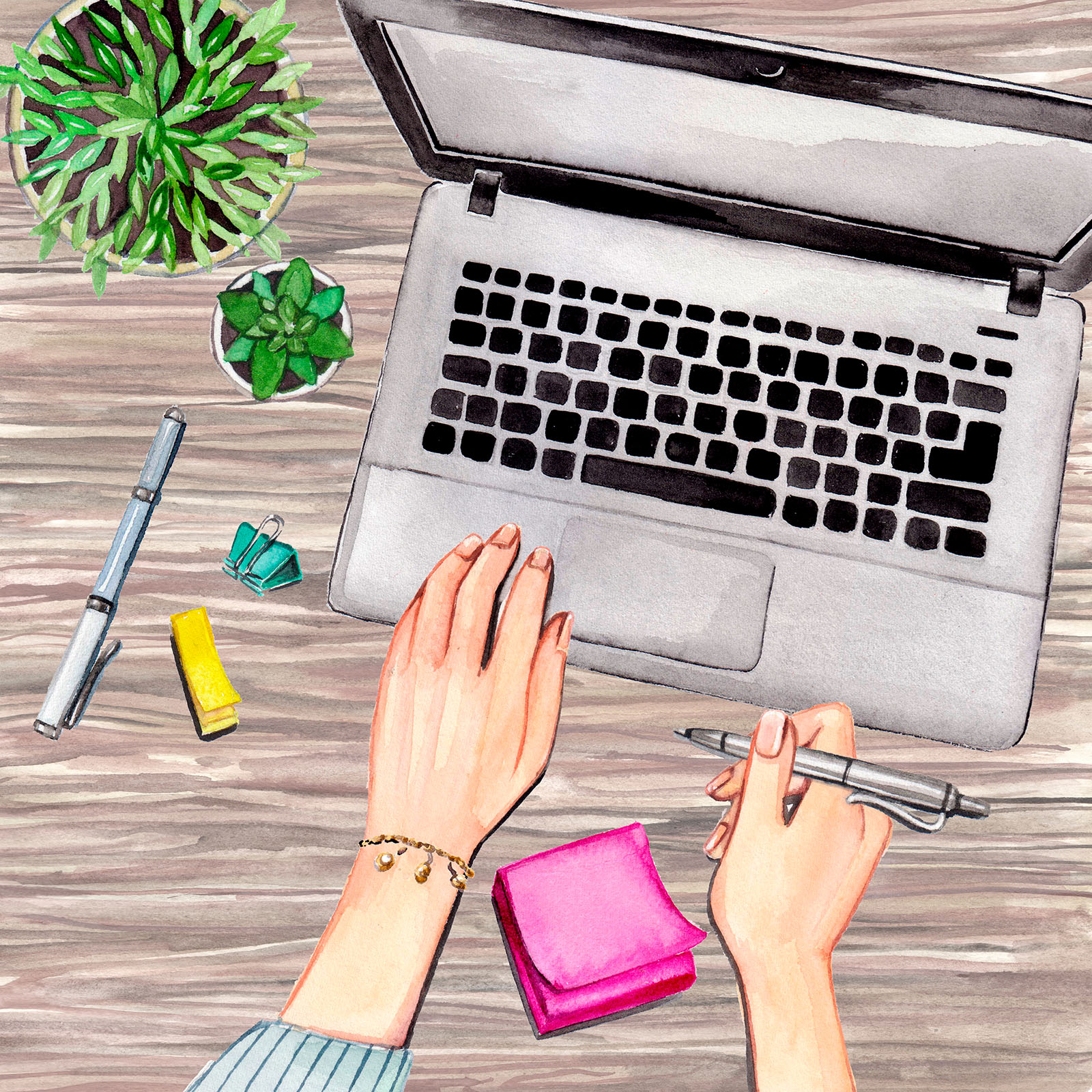
The backdrop: Set the scene
Your background on Zoom says a lot about you, even before you start speaking. While your top and makeup may be perfectly on point, your space is part of the overall impression.
The good news? It only takes a few small adjustments to create a background that’s simple, clean, and uniquely you!
Here’s how to set up a Zoom-friendly room decor that adds polish to your calls without much fuss.
1. Lighting is key
Good lighting is essential for a clear, flattering appearance on camera. Natural light works best, but there are easy fixes if that’s not an option.
Face a window if possible: Position yourself so natural light from a window hits your face. This soft, even lighting prevents shadows and gives you a natural glow that looks good on Zoom. Avoid having the window behind you as the back lighting can make your face look shadowed.
Use a ring light or lamp: A small ring light or desk lamp can make all the difference if natural light isn’t available. Place the light source behind your computer to fill in shadows and keep your face well-lit.Ring lights are especially popular to look good on Zoom calls because they provide an even, flattering light and reduce harsh shadows.
Avoid overhead lights: Overhead lighting can cast unflattering shadows under your eyes and chin, making you look tired. If that’s your only option, balance it with a soft light from a desk or floor lamp positioned at eye level.
2. Choose a simple, tidy background
Your background doesn’t need to be perfect, but it should look clean and organized to keep the focus on you.
Opt for a minimal setup: Aim for a background that’s tidy and uncluttered, with a few carefully chosen items to add warmth or personality. A plant, a couple of books, or a tasteful artwork can create a polished look without overwhelming the frame.
Keep it professional: The ideal background should reflect your personality without being distracting. Avoid busy decor, piles of paperwork, or items that feel too casual, like laundry baskets or gym equipment if you want to look good on Zoom calls.
Virtual backgrounds as a quick fix: If your background is difficult to tidy up or doesn’t look quite right on camera, Zoom’s virtual backgrounds are a great alternative. Choose a neutral setting or something that fits your professional style. Zoom’s subtle blur option can also work wonders by keeping you in focus while softening any visual distractions.
3. Add a pop of color
Adding a bit of color to your background can give it life and warmth. You don’t need a complete redecoration—just a few touches will do!
Plants or flowers: A small potted plant or a fresh bouquet can instantly brighten your background and add a natural touch. Greenery adds color without feeling overwhelming, and plants bring an element of calm to your space.
Books and artwork: A small stack of books or a well-placed art piece can subtly reflect your personality. Choose colors that complement your outfit or create contrast for added depth. If you work in a creative field, consider placing a few of your favorite design pieces on a shelf or table within view.
Colorful throw or cushion: If part of a sofa or chair shows up in your background, adding a colorful throw or cushion can be a quick way to inject warmth. Stick to muted tones or solid colors to avoid drawing too much focus.
4. Position your camera for the best angle
The right camera angle can improve not only how you look on Zoom but also how your background appears on screen.
Keep your camera at eye level: Set up your camera so it’s directly at eye level, which is the most flattering and natural angle for your face. This also helps ensure the background stays balanced and doesn’t look warped or cut off.
Maintain a few feet behind you: Sit a few feet away from the wall or background objects to create depth. This helps avoid a flat, compressed look, giving your background a more professional, three-dimensional feel.
Frame yourself with white space: Ensure there’s a bit of space above your head in the frame, with your shoulders and chest visible. This balanced positioning keeps your face centered and your background neat without awkward cropping.
5. Avoid distractions and sound issues
A clean background is essential to look good on Zoom, but so is an environment free of noise or visual distractions.
Limit moving objects: Keep pets, fans, or anything that might move out of frame, as motion can draw attention away from you. If you have to work in a busy household, use a simple room divider to minimize distractions.
Soundproofing tips: Hard surfaces like wood floors or bare walls can create echoes, affecting your Zoom sound quality. If this is an issue, adding a rug, curtain, or even a few soft furnishings can help absorb sound and improve audio clarity.
6. Create a signature look with unique touches
A small signature element that’s personal but not too distracting can make you memorable on Zoom. Consider subtle touches that showcase your style:
A signature item: Perhaps a unique vase, a favorite art piece, or a quirky mug adds a touch of “you” to the space. These small items give viewers a glimpse into your personality and make your background feel intentional rather than generic.
Lighting as decor: If you’re feeling creative, use decorative lighting like a small string of fairy lights or a stylish floor lamp to add warmth and ambiance. Just keep it soft and subtle, as too much lighting in the background can distract from your face.
Looking good on Zoom isn’t about perfection—it’s about feeling comfortable and confident. With just a few tweaks to your look and your setup, you’ll be ready to rock any video call!
What’s your go-to hack to look good on Zoom? Share your favorite quick fix or tell us which tips you’re excited to try!
The post How to look good on Zoom: The ultimate guide to wowing on video calls appeared first on The Beauty Gypsy.
